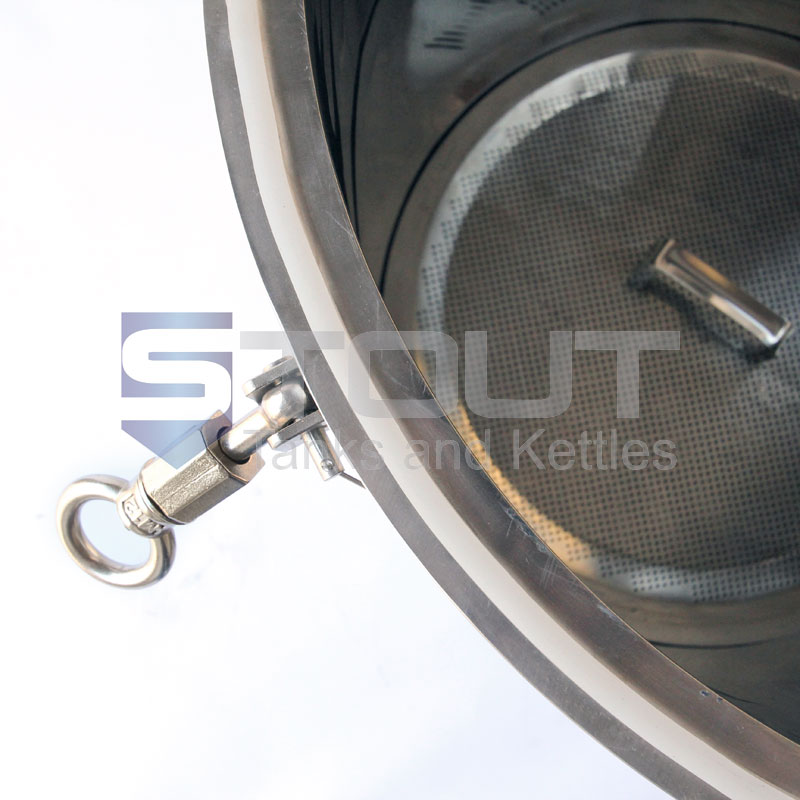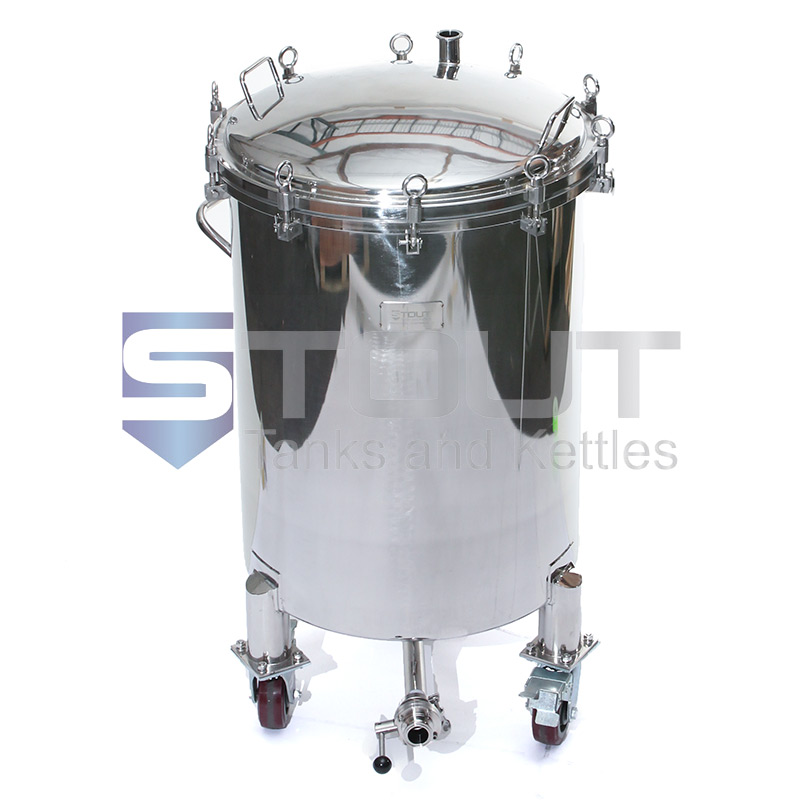PLEASE NOTE: The procedures in this document are generalized to cover a wide range of cleaning demands around the brewhouse.
CLEANING MODERN BREWERIES
Brewers should regularly and thoroughly clean their brewhouse and brewing equipment for many reasons. Proper cleaning and sanitization will prevent the transfer of flavors and odors from one batch of product to another, prolong the usefulness of equipment, ensure efficient operation, and eliminate contamination.
Cleaning and sanitizing are distinct processes that are essential to brewhouse upkeep. Without prior cleaning, the residual biofilm will interfere with the sanitizers and potentially neutralize their effectiveness. Likewise, without adequate sanitization, microorganisms are likely to grow and be introduced to your products.
T.A.C.T. This simple acronym will help you to remember good cleaning practices.
T – Time. The amount of time a cleaning agent remains in contact with the soil/biofilm determines the effectiveness of your cleanup. Too long and you are wasting time. Too short and you are not removing potential contaminants. During the brewing process, it is almost always easier to remove soil deposits while they are still fresh.
A – Action. From CIP spray balls to manual scrubbing, there are many factors to consider when applying your cleaner. From brush texture, to flow rate, to foaming, to gel, to burst rinsing, the action you are performing will depend largely on the chemical being used and the equipment being cleaned.
C – Cleaner/Concentration. Different chemicals are effective against different types of brewhouse biofilms. It will make your cleaning easier if you understand the soils you are removing and protecting against. Likewise, the ratio of water to chemical is crucial to successful sanitization. Measure twice, pour once.
T – Temperature. For every increase of 10ºF in your solution, the number of molecule collisions is roughly doubled. The hotter the cleaning solution, the more cleaning can be achieved. But other factors such as the chemicals in use and the equipment being cleaned also play a factor in determining proper temperature. Make sure you are paying close attention to the temperature warnings of your cleaning agents and equipment.
PASSIVATION BASICS
When does your equipment need to be passivated?
Corrosion resistance of the nickel-chromium steels (ANSI class 300 series) depends upon the formation of a protective chromium oxide film. These films can be damaged during fabrication and through careless handling. When the film is damaged the stainless surface is susceptible to corrosion and pitting. The passive surface is corrosion resistant and needs to be maintained to prolong the life of the stainless steel.
New stainless steel should always be cleaned and passivated to remove the cutting and milling oils and establish a passive oxide layer. We recommend passivating tanks and line circuits every other year to reduce the probability of corrosion.
Passivation of a stainless steel surface occurs naturally by air, but it is a slow process. Use chemicals like nitric acid(CS35) to accelerate the process.
3 Basic Steps for Passivating:
Neither air nor nitric acid can form a protective film when grease, oil, fingerprints, or other contaminants are present on the surface of the tanks. To ensure the surface is degreased you must first perform a water break test:
- Degreasing/Cleaning
- Use a water based high pressure solvent(CS109) and mix 2 oz/gallon.
- Circulate at 140ºF for 30 minutes.
- Rinse with fresh water
- Passivation
- Prepare a 6% weight per weight (w/w) citric acid solution in the vessel.
- Calculate solution
- (CIP volume of tank in gallons) * (8.34 lb) = Y
- (Y) * (0.060) = X lbs of Citric Acid
- PH of solution should be less than 4
- Circulate citric acid solution for 60 min at 140ºF
- To maintain temperature, run CIP loop through heat exchanger or steam jacketed kettle
- Drain system and rinse with water for 5 minutes
- Check pH of rinse water. Should match supply tap.
- Open all ports and allow system to air dry for 48 hours.
- Sanitizing
- Rinse with cold water.
- Mix a solution of peracetic acid(CS513) and cold water 0.4 oz/gallon.
- Circulate for 30 min.
- Do not rinse.
TANK INTERIORS
Hot Liquor Tanks
“Scaling” inside an HLT is caused by a buildup of phosphoric acid/calcium on the tank walls. These compounds can be introduced through the water system (hard water) or as an additive. Some brewers introduce phosphoric acid or calcium to their HLT to adjust the pH before mashing, but in order to avoid scaling on your HLT we recommend adding these components directly to your mash instead of the hot liquor tank.
- Mix a phosphoric acid(CS15) solution to clean or descale your HLT.
- Fill tank to 10% volume with water. Add 1 oz/gallon water.
- Heat solution to 150ºF and circulate for 30 minutes.
- If tank is free from scaling:
- Rinse with warm fresh water.
- If tank still has scale:
- Check pH of solution.
- If pH is above 4.0 and the solution looks clear (fully dissolved) add more phosphoric.
- Bring the pH down to 2.0 and CIP again.
Brewing Tanks (Mash tun, lauter tun, brew kettle, whirlpool, hot wort tank)
- Knockout (turn off the heat source).
- Pre-rinse with water and drain thoroughly. Repeat 2 or 3 times, burst rinsing is most effective.
- If there is Beerstone scale present (calcium oxalate):
- Add beer stone and milk stone remover(CS122) at normal use rates.
- Heat to 190ºF and cycle for 45 minutes.
- Drain tank. This solution can be reused on similar tanks within the same day.
- Detergent wash with suitable caustic(CS20) or alkaline cleaner(CS464):
- Mix 1-2 oz/gallon.
- Heat to 160-180ºF and circulate for 30 minutes.
- Drain out detergent solution. This same solution can be used to CIP your fermenters and brite tanks.
- Chase with warm water. Do not allow tank surfaces to dry.
- Continue to burst rinse and check pH until alkali is gone.
Storage Tanks (Fermenters, Brite Tanks, Serving Tanks)
So long as you can circulate hot water, 180ºF, through your storage tanks then you may use the same caustic or alkaline CIP solution from the brewing tanks. Simply circulate for 30 minutes then rinse with fresh water until pH is restored.
If it is hard to heat these tanks, then use an alkaline solution(CS17):
- Remove CO2 and perform burst rinses of tank using cold water.
- Fill tank to 10% capacity with warm water
- Mix 1-2 oz/gallon. Circulate for 30 minutes.
- Drain solution and rinse tank until pH of water is restored.
- Drain and seal tanks.
LINE AND HEAT EXCHANGERS
The solutions used to clean the tanks may be conveniently circulated through lines and heat exchangers, followed by the appropriate rinsing and acid washing where necessary.
NOTE: For this system to be completely successful, recirculation will be necessary to achieve appropriate contact time (around 45 minutes) in the detergent wash step of the system.
If clean-out-of-place is used, a manual chlorinated cleaner should be used, followed by appropriate rinsing and sanitizing before reassembly of the plant.
In cases where build-up of mineral occurs in the tubing, acid wash may be required on occasion to aid in the removal of this “soil” – again followed by an appropriate rinsing and sanitizing before reassembly. Learn more about this >
Beer & Milk Stone Remover can be added to caustic to help remove beer stone.
Phos/NITRIC ACID CIP CLEANING
It is important to periodically circulate phos/nitric acid solution through your tanks, lines, and heat exchangers to remove stains and mineral films. We recommend performing this cleaning after every other brewing run.
- After alkaline cleaner application, rinse surfaces with water
- Add acid CIP cleaner(CS35) at 1-2 oz/gallon.
- Heat to 145ºF and circulate 30 minutes.
- Burst rinse surfaces thoroughly with hot, potable water.
TANK EXTERIORS AND OTHER SURFACES
The best way to control mold, mildew and yeast growth on brewhouse surfaces is to clean with a foaming chlorinated cleaner such as Foaming Chlorinated Cleaner(CS12).
Do not use this product on copper surfaces. Be sure to rinse well.
Sanitize afterword with PAA(CS513) or quaternary ammonium disinfectant(Sani 512).
BIG Thank You to ENERCO Brewery Cleaners for helping us put this document together.
Have a Question? We are here to help. Contact Us Now >
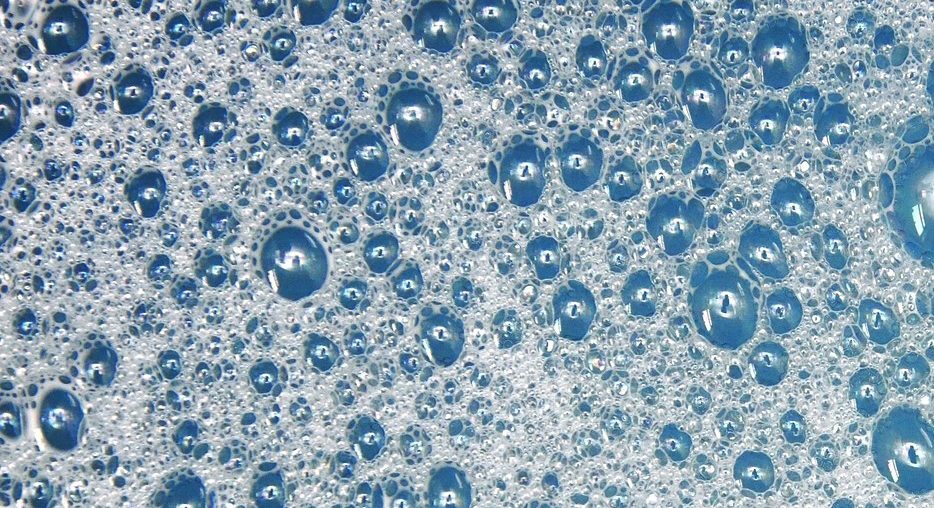

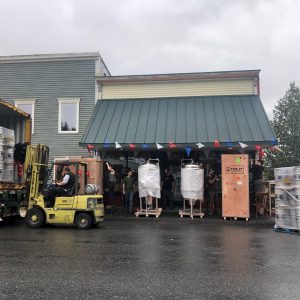
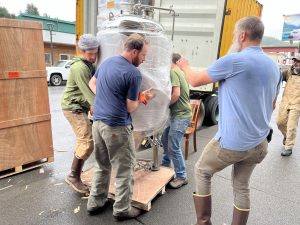
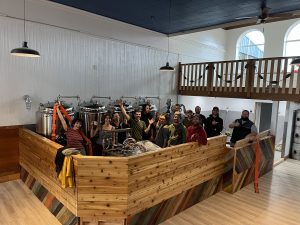

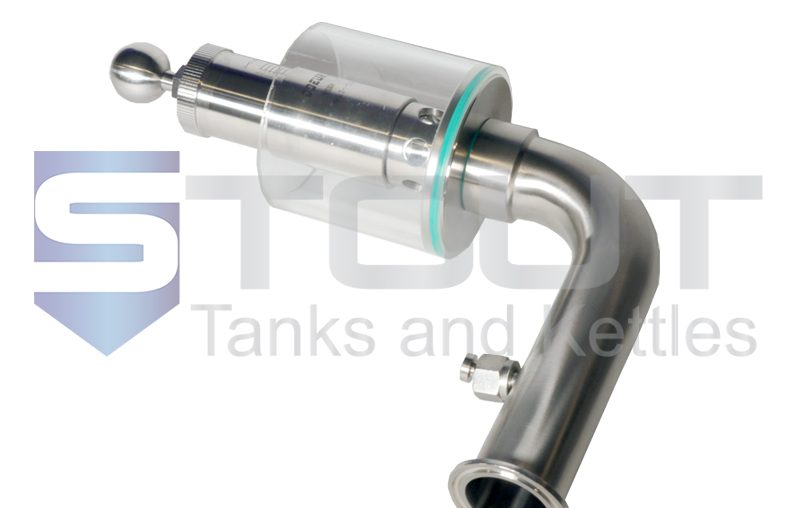


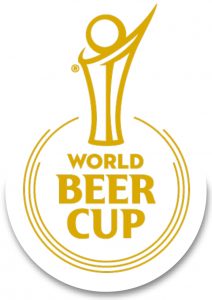 That’s a wrap! This year marked the largest World Beer Cup to date, with over 10,000 entries. These entries were evaluated over 9 days by an elite panel of 226 judges from 28 countries. At the conclusion of the 2022
That’s a wrap! This year marked the largest World Beer Cup to date, with over 10,000 entries. These entries were evaluated over 9 days by an elite panel of 226 judges from 28 countries. At the conclusion of the 2022 

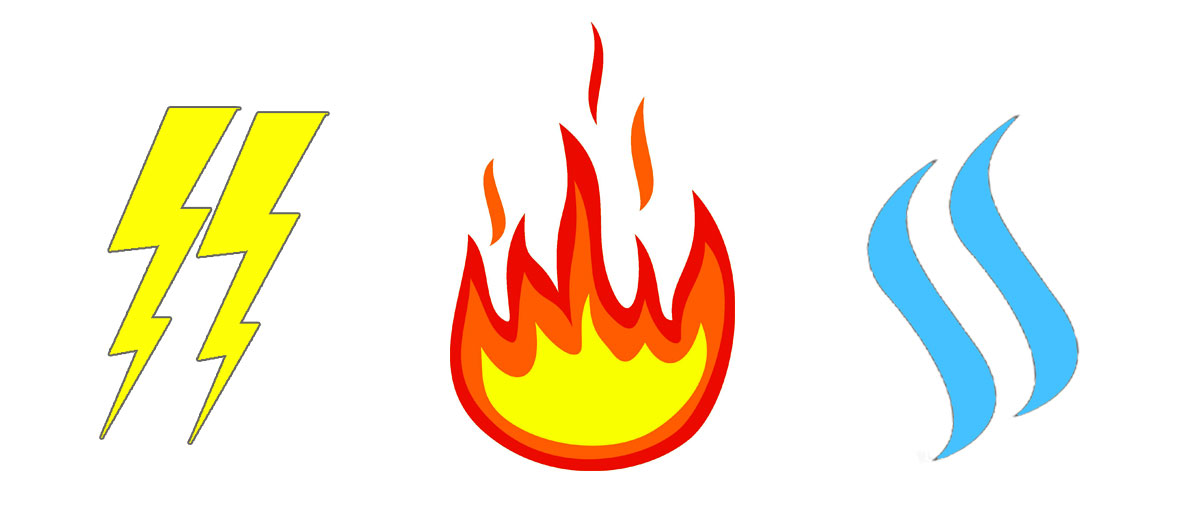

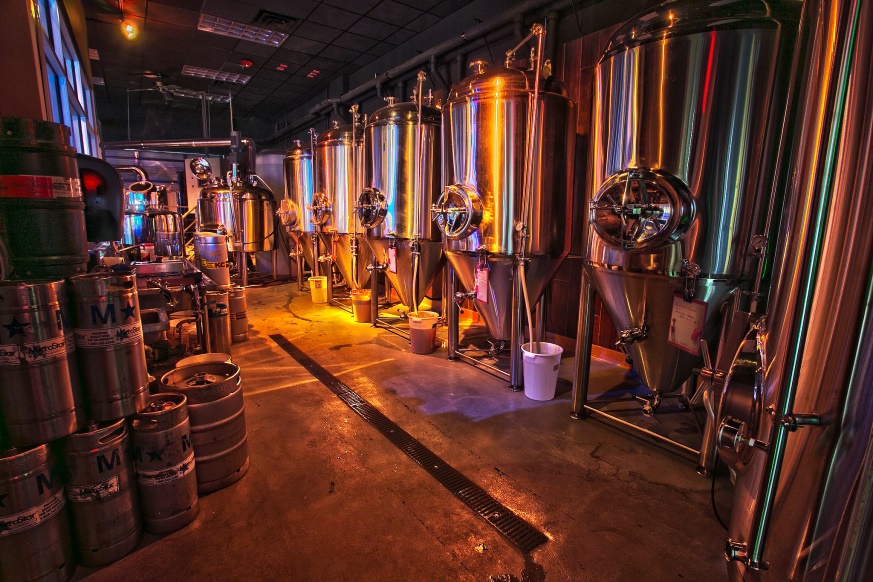 Drains are expensive to install, but necessary for your operation. We recommend floor drains in the brewhouse, the cellar, the kegging/bottling area, and anywhere a spill is likely. Floors should slope ¼” to the foot toward drains. Drains should be large enough to handle dumping your largest tank, or a leak from your water main. The finished surface of the floors is also important. Your floor and wall surfaces must be resistant to both mild acids and strong alkaline. Be well informed by your chemical vendors when you choose the right surface for your floors.
Drains are expensive to install, but necessary for your operation. We recommend floor drains in the brewhouse, the cellar, the kegging/bottling area, and anywhere a spill is likely. Floors should slope ¼” to the foot toward drains. Drains should be large enough to handle dumping your largest tank, or a leak from your water main. The finished surface of the floors is also important. Your floor and wall surfaces must be resistant to both mild acids and strong alkaline. Be well informed by your chemical vendors when you choose the right surface for your floors. 

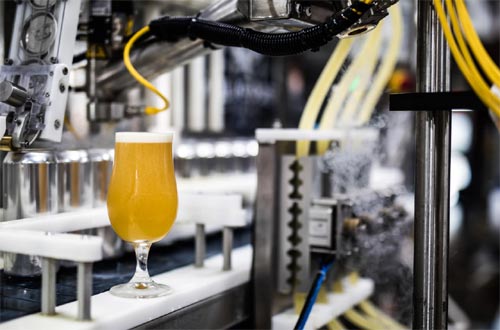
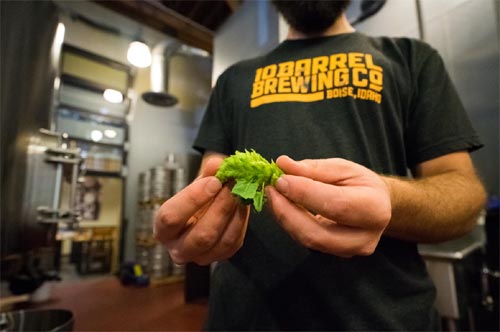



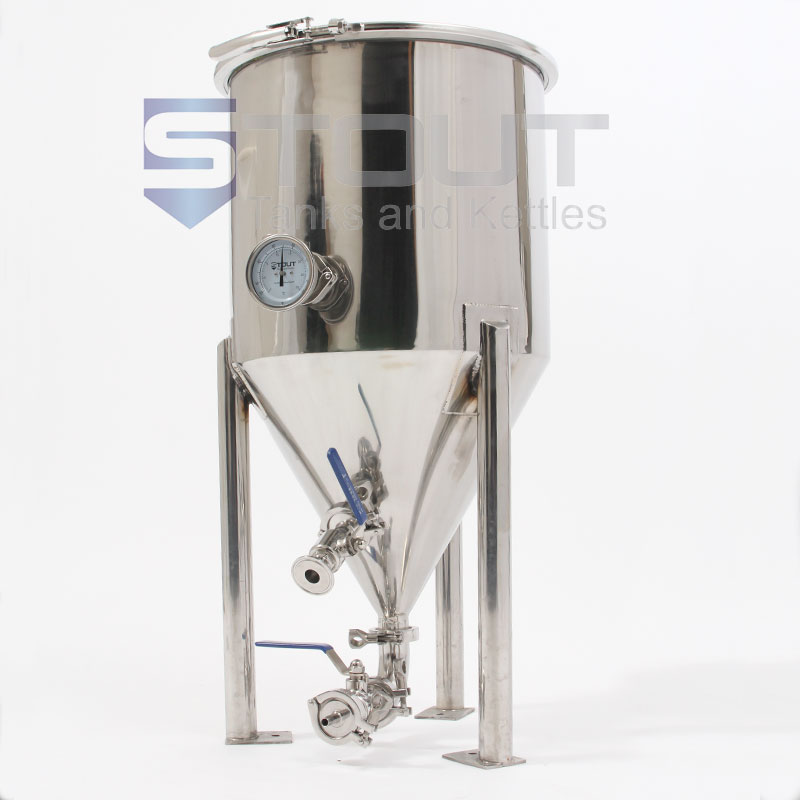
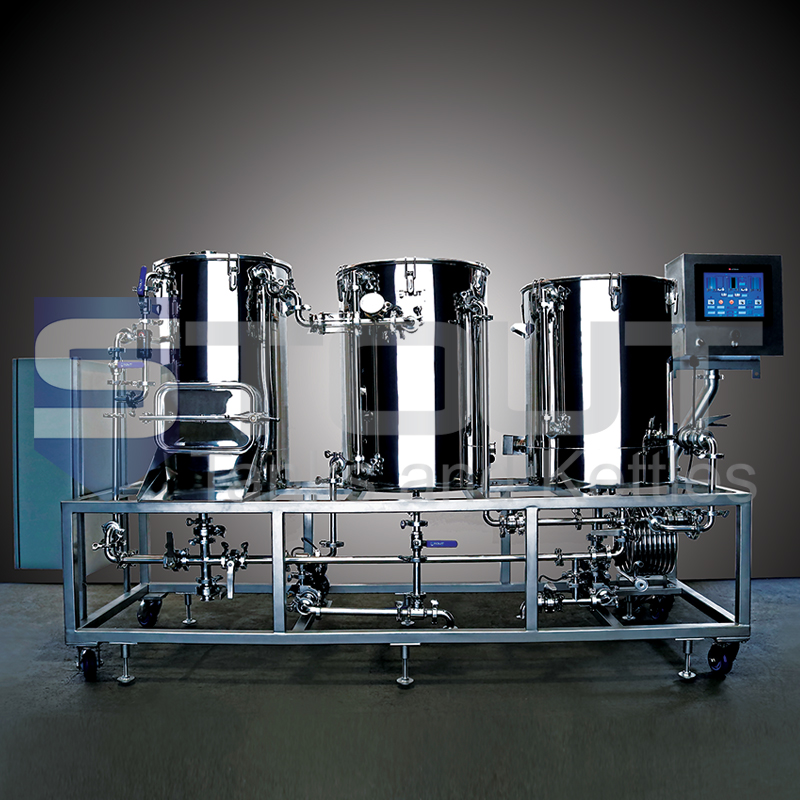
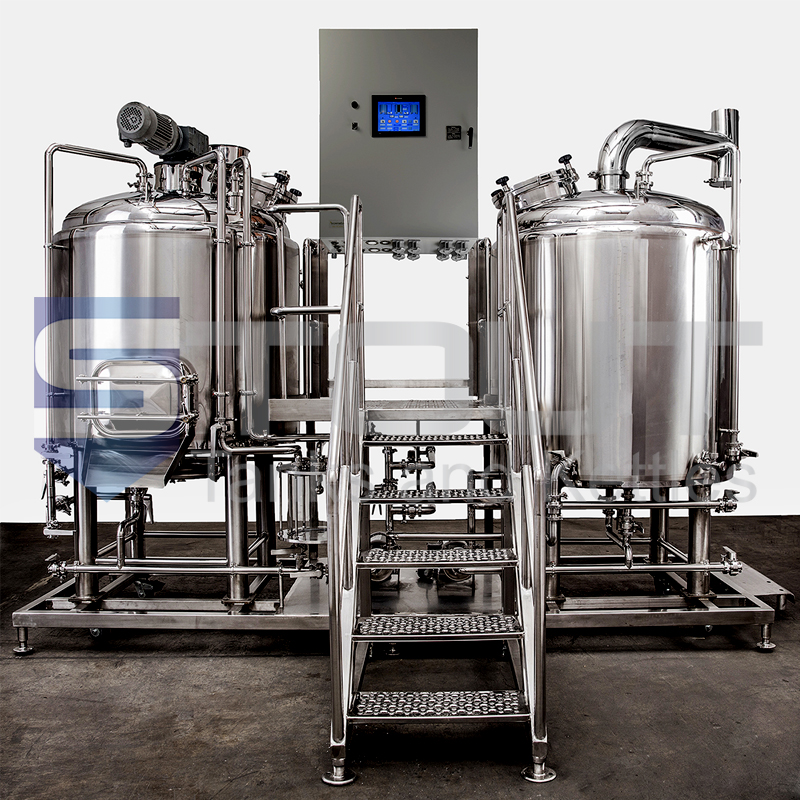
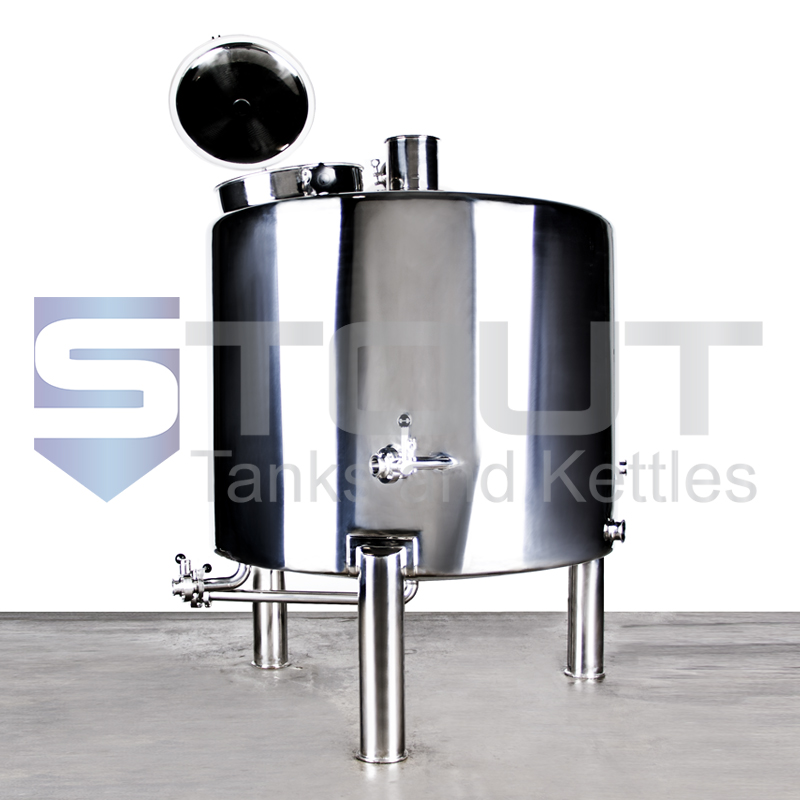

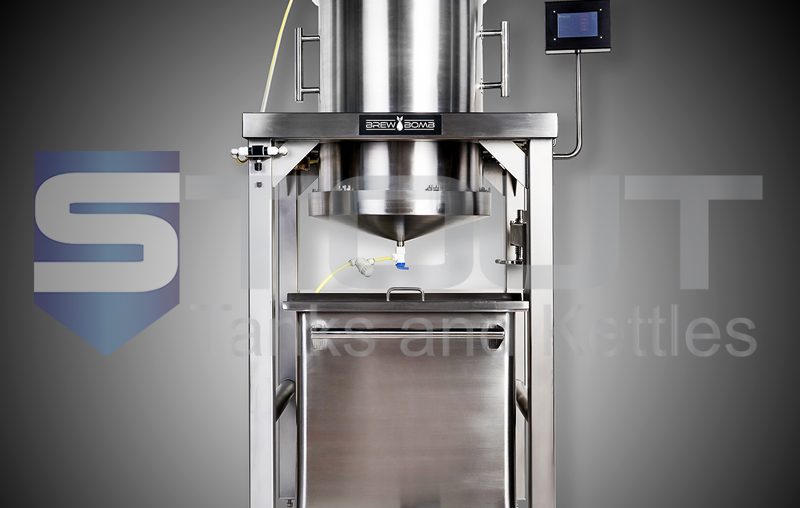

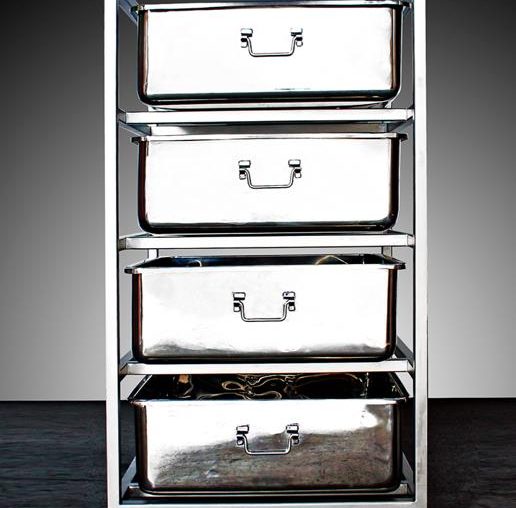
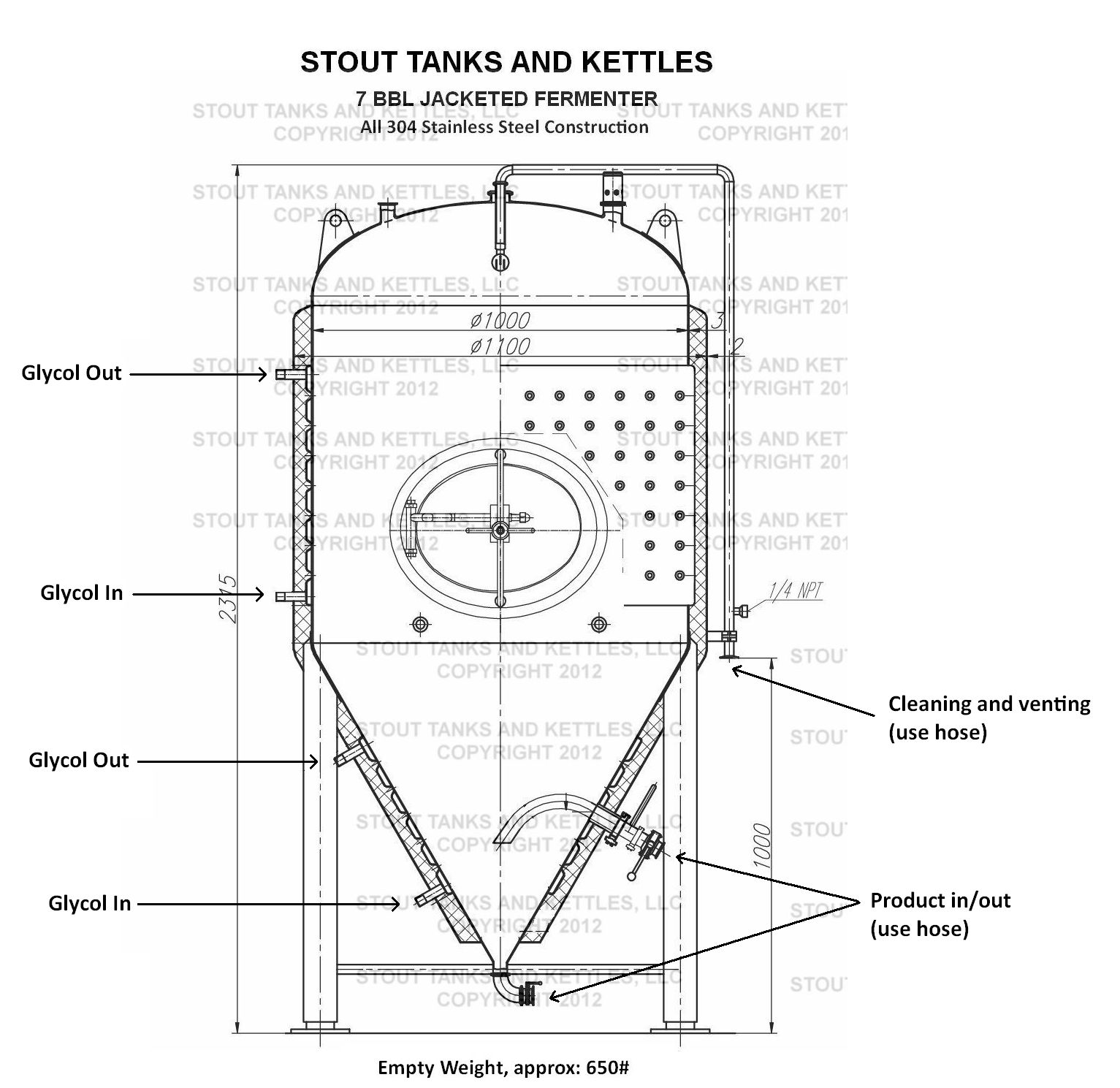
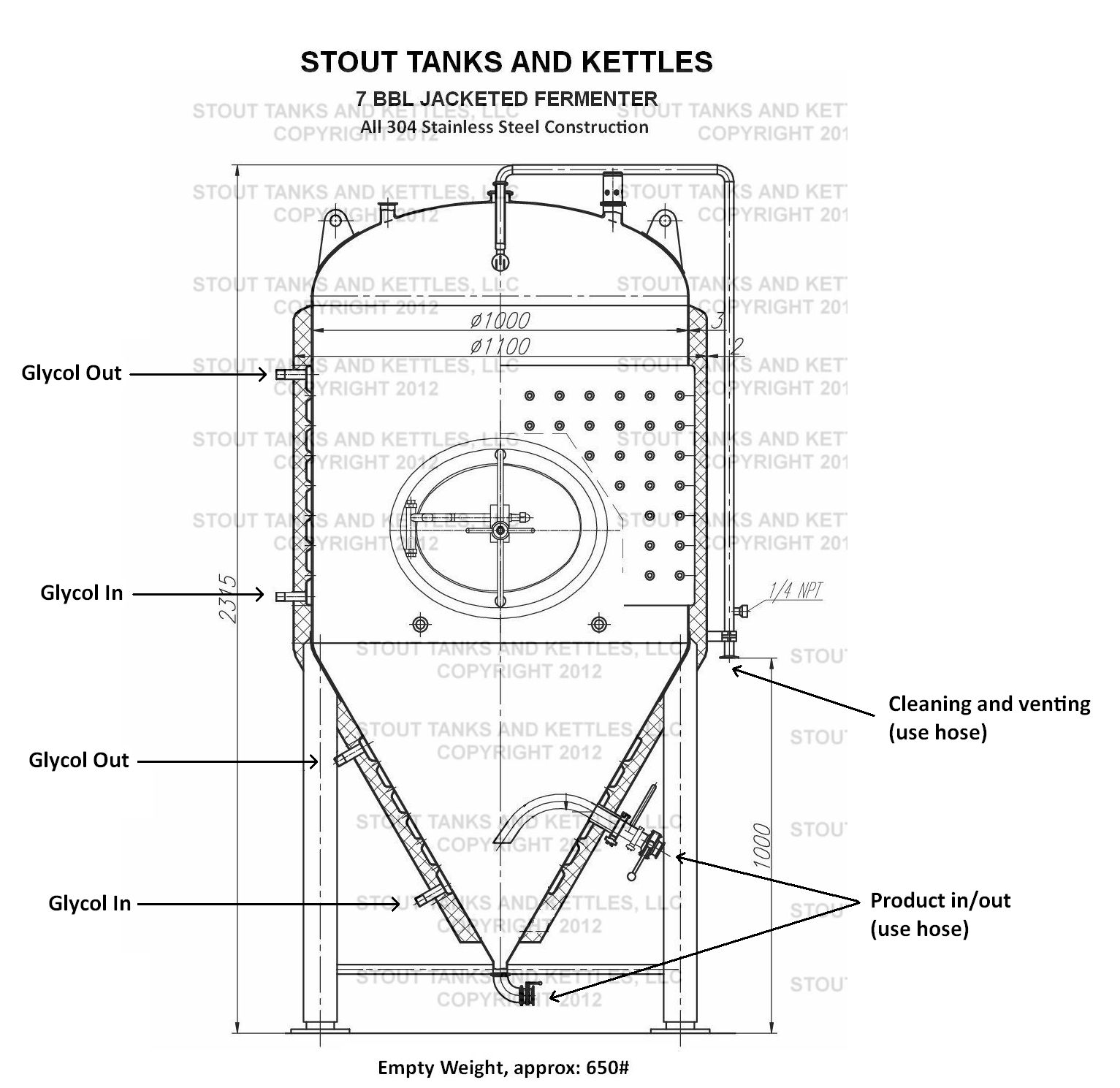 By eliminating oxygen from there fermenters, we make sure any stray bacteria that require oxygen will die before they can reproduce. (Oxygen also changes the flavor of beer by oxidizing certain enzymes and flavor components in beer). We cap the head space in the fermenter with a shallow domed top. As the yeast ferment the sugars in the beer, the carbon dioxide created by fermentation bubbles to the surface. Because CO2 is heavier than oxygen, it displaces the oxygen through the vent tube at the very top of the fermenter. Finally, the tank itself is constructed to be hostile to bacteria. We use virgin 304 stainless steel, and polish it to a mirror finish, so there are no scratches or imperfections where bacteria can hide. We make every weld sanitary, smooth and polished to eliminate bacteria. The tanks are designed to drain smoothly and evenly, so a Clean In Place program of caustic rinses followed by acidic sanitizing rinses will kill any bacteria on any surface.
By eliminating oxygen from there fermenters, we make sure any stray bacteria that require oxygen will die before they can reproduce. (Oxygen also changes the flavor of beer by oxidizing certain enzymes and flavor components in beer). We cap the head space in the fermenter with a shallow domed top. As the yeast ferment the sugars in the beer, the carbon dioxide created by fermentation bubbles to the surface. Because CO2 is heavier than oxygen, it displaces the oxygen through the vent tube at the very top of the fermenter. Finally, the tank itself is constructed to be hostile to bacteria. We use virgin 304 stainless steel, and polish it to a mirror finish, so there are no scratches or imperfections where bacteria can hide. We make every weld sanitary, smooth and polished to eliminate bacteria. The tanks are designed to drain smoothly and evenly, so a Clean In Place program of caustic rinses followed by acidic sanitizing rinses will kill any bacteria on any surface.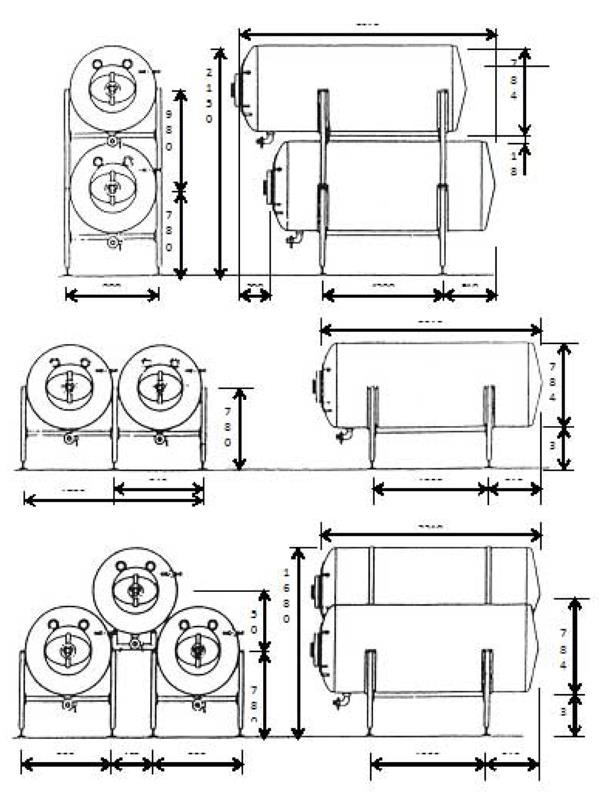 It’s clear that beer fermenters are not the best environment for a symbiosis between yeast and bacteria. They are very yeast friendly and bacteria unfriendly. Yet most Kombucha brewers we surveyed used some beer fermenter or modified cylindrical beer fermenter for their Kombucha.
It’s clear that beer fermenters are not the best environment for a symbiosis between yeast and bacteria. They are very yeast friendly and bacteria unfriendly. Yet most Kombucha brewers we surveyed used some beer fermenter or modified cylindrical beer fermenter for their Kombucha.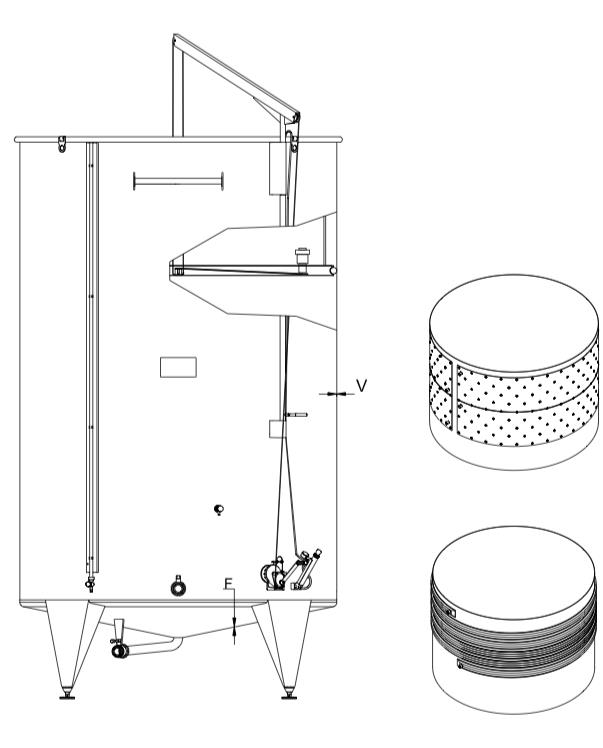 capacity, or “floating lid” wine tanks are a vertical cylinders, made from virgin stainless steel. They have a similar width to volume ratio to allow of efficient glycol cooling. Controlling oxygen is even more important with wine because of the oxygen sensitive compounds in wine. The lids float directly on the surface of the wine eliminating entirely any airspace above the wine. Wine is more acidic than beer, so the polish on a wine tank is less crucial than on a beer tank, so the finish on a wine tank is a bright annealed finish. The steel is thinner because it does not need to be polished so extensively. But wine fermenters, like beer fermenters, are designed to be heaven for yeast, and hell for bacteria.
capacity, or “floating lid” wine tanks are a vertical cylinders, made from virgin stainless steel. They have a similar width to volume ratio to allow of efficient glycol cooling. Controlling oxygen is even more important with wine because of the oxygen sensitive compounds in wine. The lids float directly on the surface of the wine eliminating entirely any airspace above the wine. Wine is more acidic than beer, so the polish on a wine tank is less crucial than on a beer tank, so the finish on a wine tank is a bright annealed finish. The steel is thinner because it does not need to be polished so extensively. But wine fermenters, like beer fermenters, are designed to be heaven for yeast, and hell for bacteria. When Toby Tull and David Aycock started Bare Bucha in Waco Texas, they were unapologetically pro-probiotic. They loved the health benefits that kombucha offered, full of healthy bacteria and organic acids. But they were also committed to following the rules, and creating a product that proudly complied with all rules. They wanted to use nature itself, and the symbiotic power of the community of microbes in Kombucha. They did not want to dilute their kombucha with water before bottling to meet the 0.5% ABV requirement. That does not comply with the law. They did not want to rely on million dollar machine to remove the alcohol with an industrial distillation process. The very brand of Bare Bucha indicates a simple, pure, unadulterated beverage. Industrial processes go against their very brand. Industrial distilling is not consistent with the small-business, craft ethos of Kombucha in their minds. The also did not want to pasteurize their Kombucha at any point in the process in order to kill the yeast before they could create more alcohol. Killing the yeast with pasteurization removes the very biotics that make Kombucha pro-biotic.
When Toby Tull and David Aycock started Bare Bucha in Waco Texas, they were unapologetically pro-probiotic. They loved the health benefits that kombucha offered, full of healthy bacteria and organic acids. But they were also committed to following the rules, and creating a product that proudly complied with all rules. They wanted to use nature itself, and the symbiotic power of the community of microbes in Kombucha. They did not want to dilute their kombucha with water before bottling to meet the 0.5% ABV requirement. That does not comply with the law. They did not want to rely on million dollar machine to remove the alcohol with an industrial distillation process. The very brand of Bare Bucha indicates a simple, pure, unadulterated beverage. Industrial processes go against their very brand. Industrial distilling is not consistent with the small-business, craft ethos of Kombucha in their minds. The also did not want to pasteurize their Kombucha at any point in the process in order to kill the yeast before they could create more alcohol. Killing the yeast with pasteurization removes the very biotics that make Kombucha pro-biotic.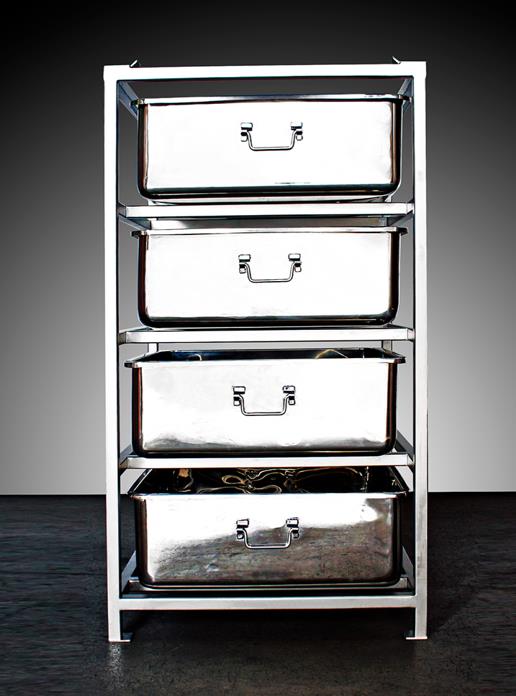 Together with Stout Tanks and Kettles, we developed a new shape of fermentation vessel especially for Kombucha. We changed the shape to not only to allow bacteria work in symbiosis with yeast in the Scoby, but to allow the symbiosis to actually favor the bacteria. The bacteria primarily responsible for consuming the alcohol are Komagataeibacter species, which require oxygen to metabolize alcohol. So we created an open top fermenter to allow access to oxygen. The Komagataeibacter bacteria ferment best on the surface, so we created a shallow pan that allowed lots of surface area for the bacteria to thrive. The bacteria perform best in temperatures above 80 degrees Fahrenheit, so we created a single walled pan that allows the Kombucha to absorb heat from the surrounding air. Brewers can control the heat by increasing the ambient temperature of the room.
Together with Stout Tanks and Kettles, we developed a new shape of fermentation vessel especially for Kombucha. We changed the shape to not only to allow bacteria work in symbiosis with yeast in the Scoby, but to allow the symbiosis to actually favor the bacteria. The bacteria primarily responsible for consuming the alcohol are Komagataeibacter species, which require oxygen to metabolize alcohol. So we created an open top fermenter to allow access to oxygen. The Komagataeibacter bacteria ferment best on the surface, so we created a shallow pan that allowed lots of surface area for the bacteria to thrive. The bacteria perform best in temperatures above 80 degrees Fahrenheit, so we created a single walled pan that allows the Kombucha to absorb heat from the surrounding air. Brewers can control the heat by increasing the ambient temperature of the room.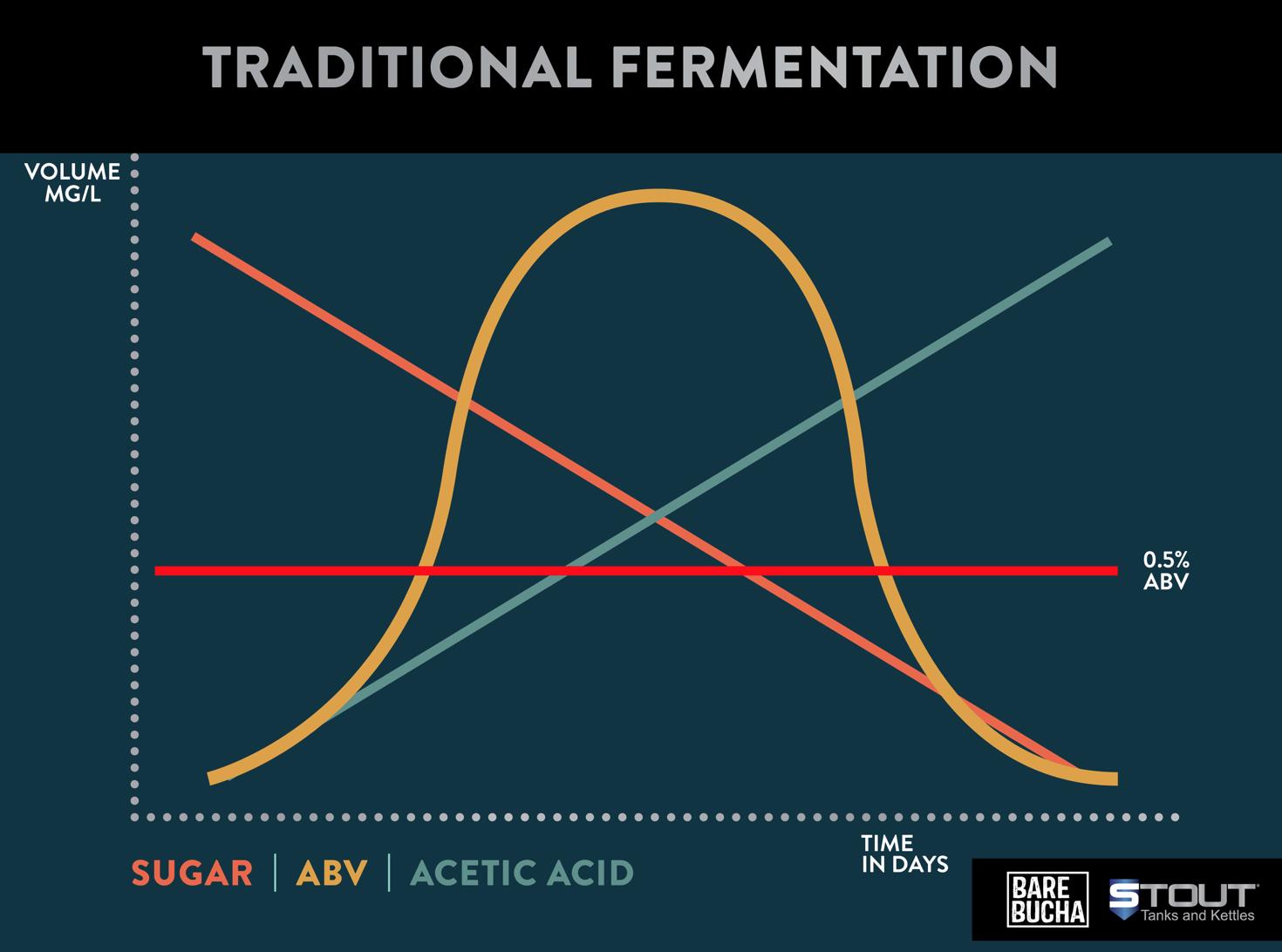
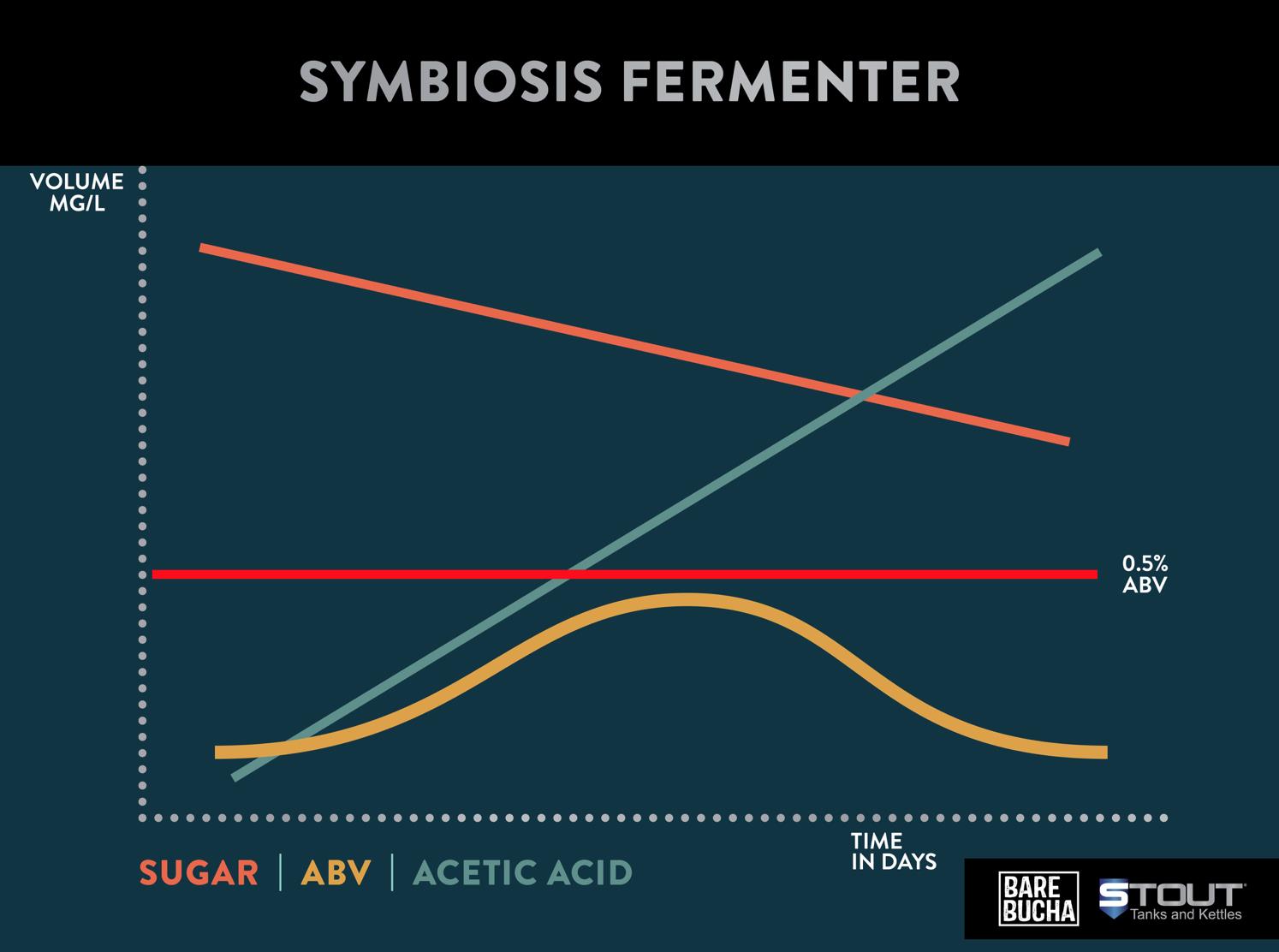 When testing the Symbiosis™ Fermenter, we found the bacteria were able to get ahead of the curve, and start consuming alcohol before it exceeded the legal limit, and creating more acetic acid sooner. The result was that Bare Bucha was able to reach their desired flavor profiles more quickly, with the same levels of organic acids as produced in a traditional fermenter, but never exceed the legal limit for alcohol. Bare Bucha was able to achieve its desired flavor profile after only 14 days of fermentation in a Symbiosis Fermenter. In a traditional fermenter, it takes over 40 days to get the alcohol levels and organic acid levels to the proper result. This allows Bare Bucha to use less sugar and less time to achieve the same flavor and pro-biotic result.
When testing the Symbiosis™ Fermenter, we found the bacteria were able to get ahead of the curve, and start consuming alcohol before it exceeded the legal limit, and creating more acetic acid sooner. The result was that Bare Bucha was able to reach their desired flavor profiles more quickly, with the same levels of organic acids as produced in a traditional fermenter, but never exceed the legal limit for alcohol. Bare Bucha was able to achieve its desired flavor profile after only 14 days of fermentation in a Symbiosis Fermenter. In a traditional fermenter, it takes over 40 days to get the alcohol levels and organic acid levels to the proper result. This allows Bare Bucha to use less sugar and less time to achieve the same flavor and pro-biotic result.
